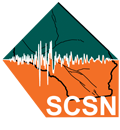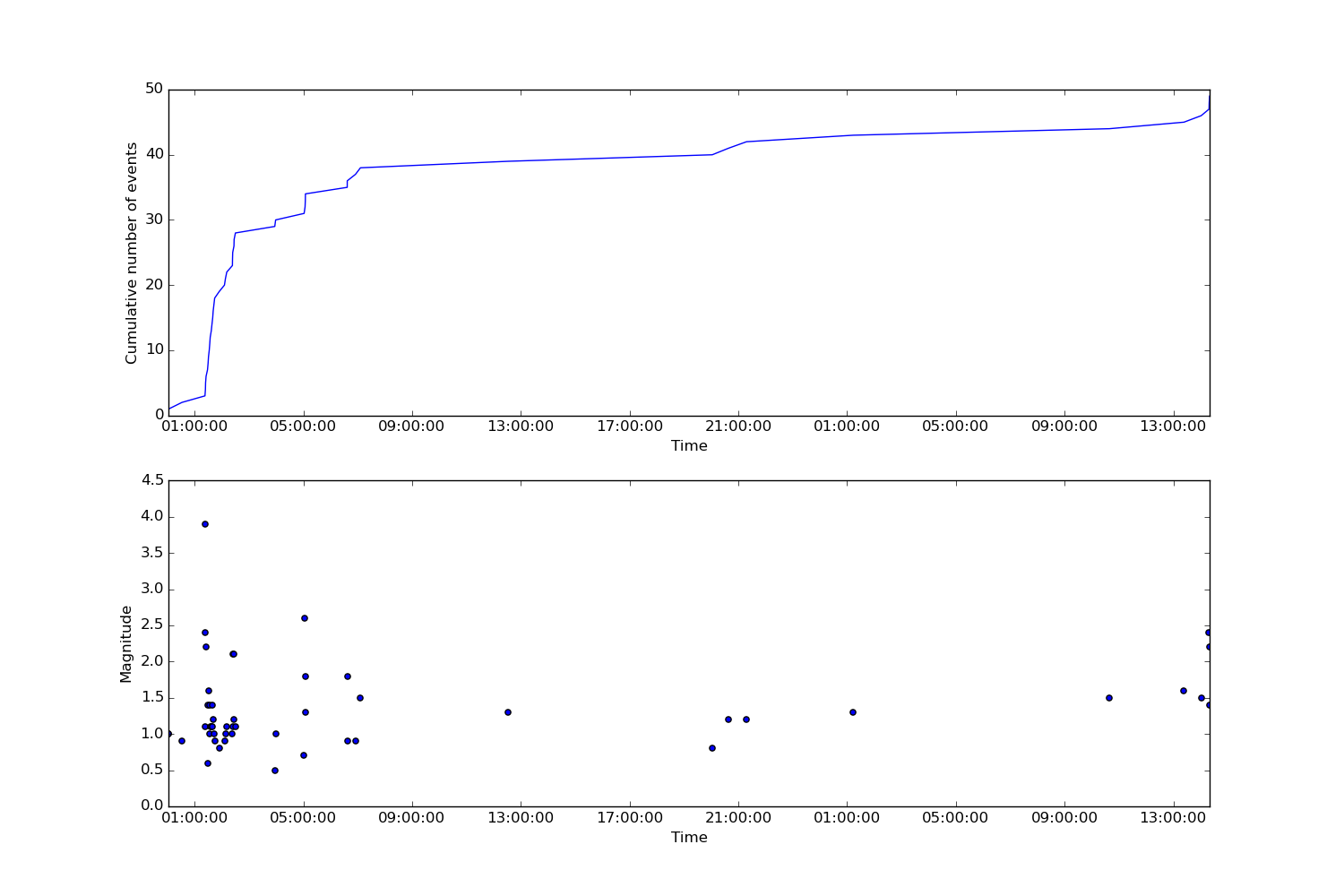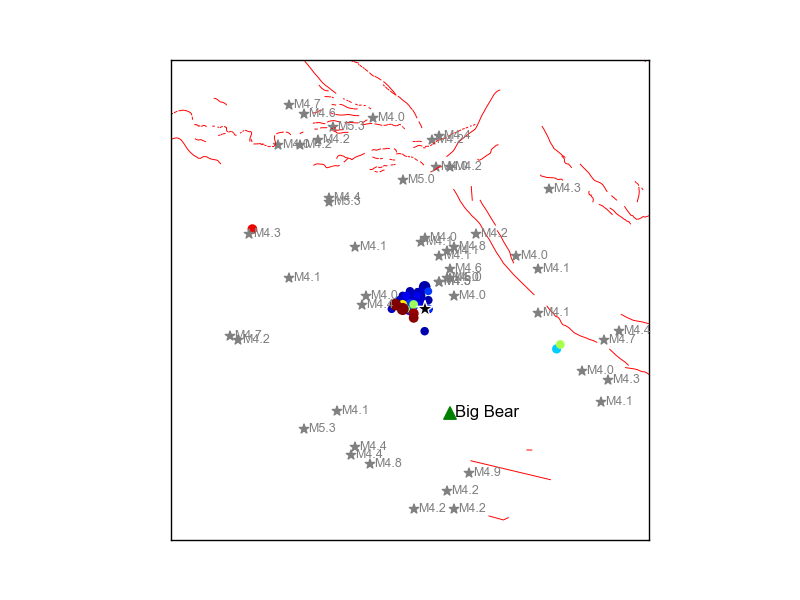Last updated October 4th, 2019
- 16 Feb 2016 01:24:20 PST, (34.303, -116.863), depth 3.1km, 5km NNW of Big Bear City, California
- Aftershocks: so far (17 Feb 2016, 02:27PM PST) there have been 44 aftershocks recorded, the largest M2.6. More may be expected in the next few days, the largest expected is approximately 1 magnitude unit smaller than the mainshock. There is a small chance (about 5%) that a larger quake could occur, with the likelihood decreasing over time.
- There were 5 events during the 3 days prior to the earthquake (within a 1 km radius), the largest was M2.4 (2016/02/16).
- The figure shows the cumulative event rate as well as magnitude against time for the sequence.
- Historical seismicity: since our records began in 1932 we’ve had 49 events of M4 or greater within 10km of today’s event, the largest was M5.3 (1992/11/27) and the most recent was M4.2 on 03 Dec 2005.
- The figure shows the historic seismicity as grey stars and the recent sequence as circles, coloured by the time of occurrence (blue early, red late) and sized by magnitude. The main M3.9 event is shown as a black star. Red lines indicate the fault traces and the town of Big Bear is marked by a green triangle.
- Nearby faults: Helendale-South Lockhart fault zone, northern San Bernardino Mountains section (3.6 km), North Frontal thrust system, western section (White Mountains thrust) (5.2 km), North Frontal thrust system, eastern section (6.4 km), Helendale-South Lockhart fault zone, Helendale section (Helendale fault) (7.4 km), Santa Ana fault zone (Santa Ana fault) (12.6 km) and Silver Reef fault (12.8 km).
- Links for: USGS earthquake page, ShakeMap, DYFI.
- Visit our special reports page for further information on local notable earthquakes.








